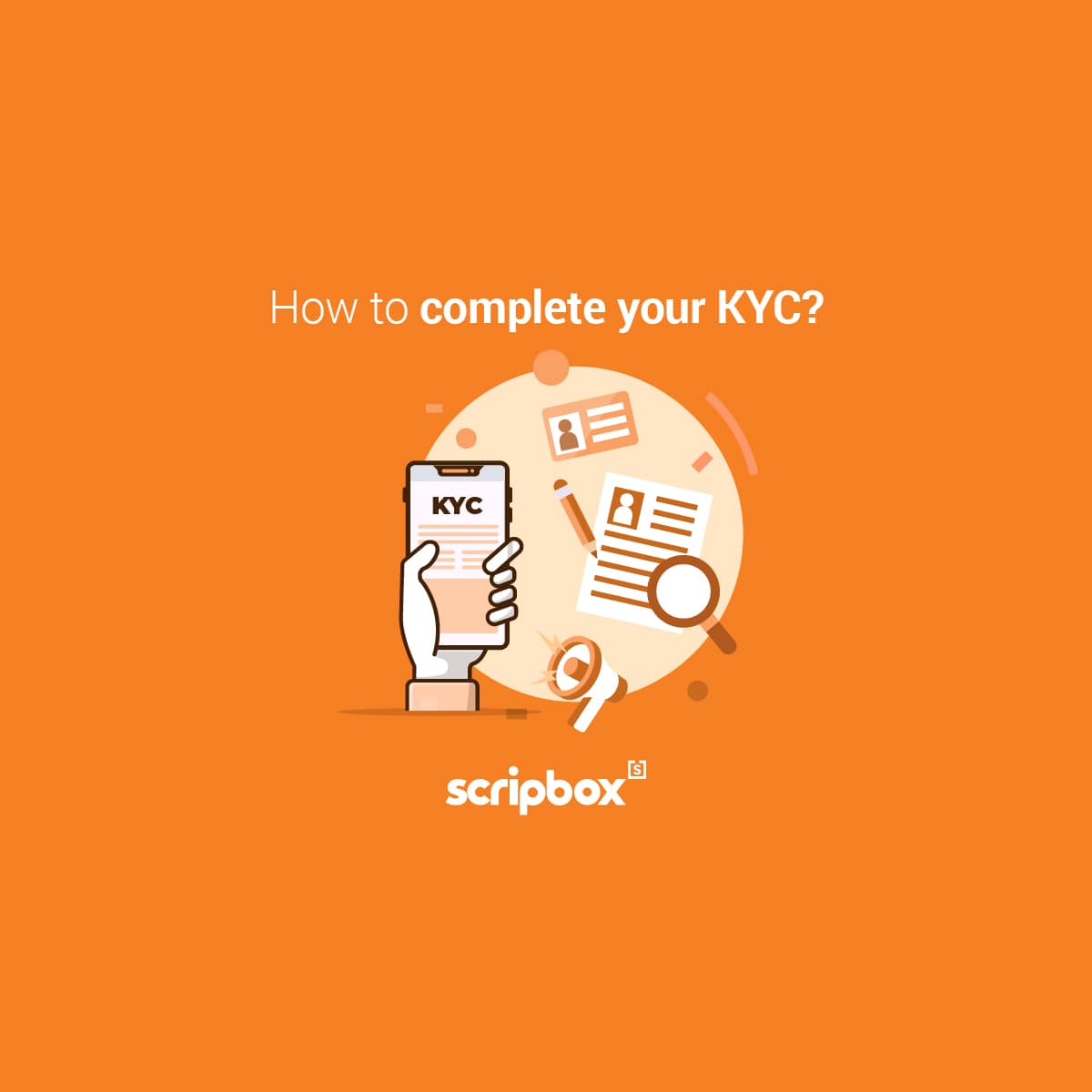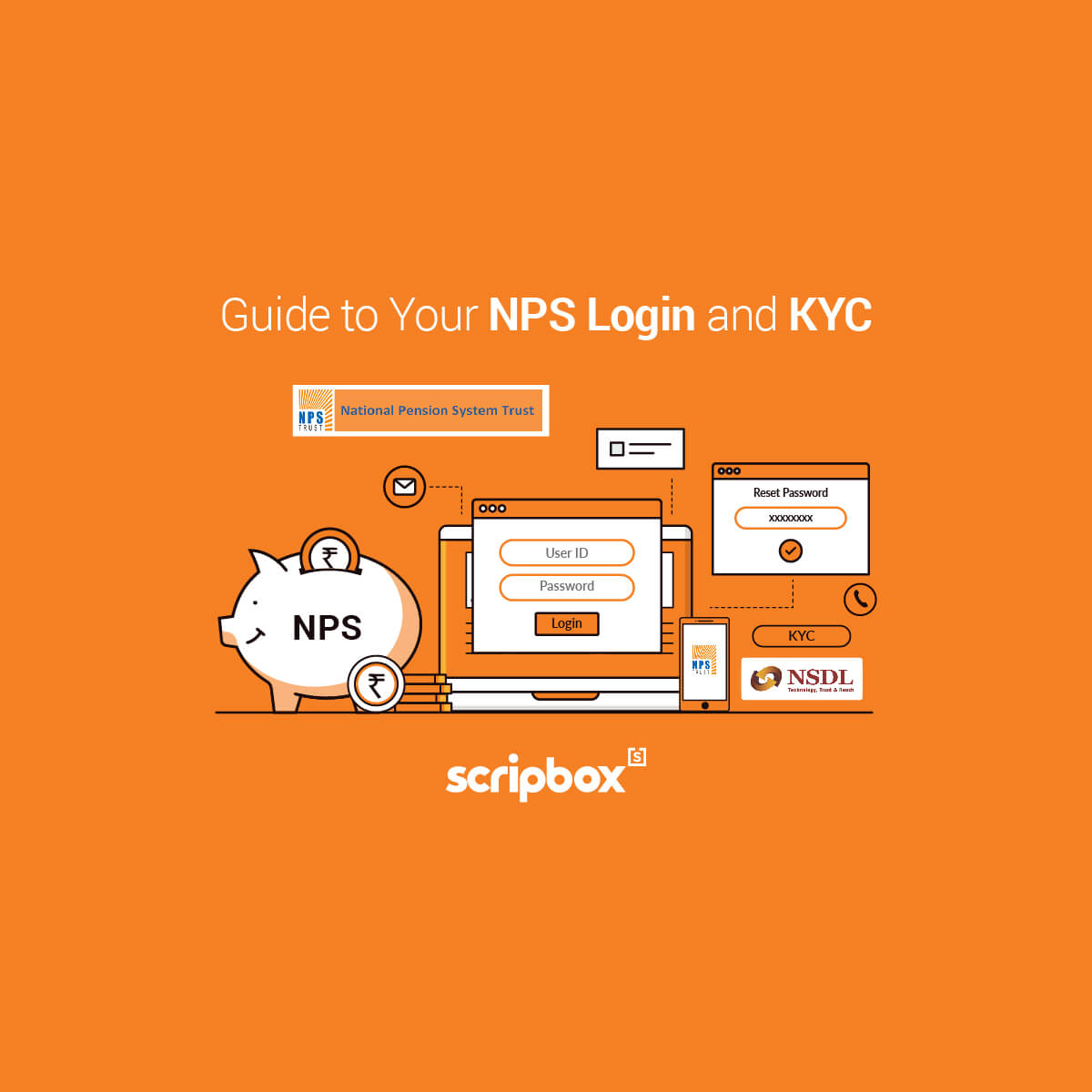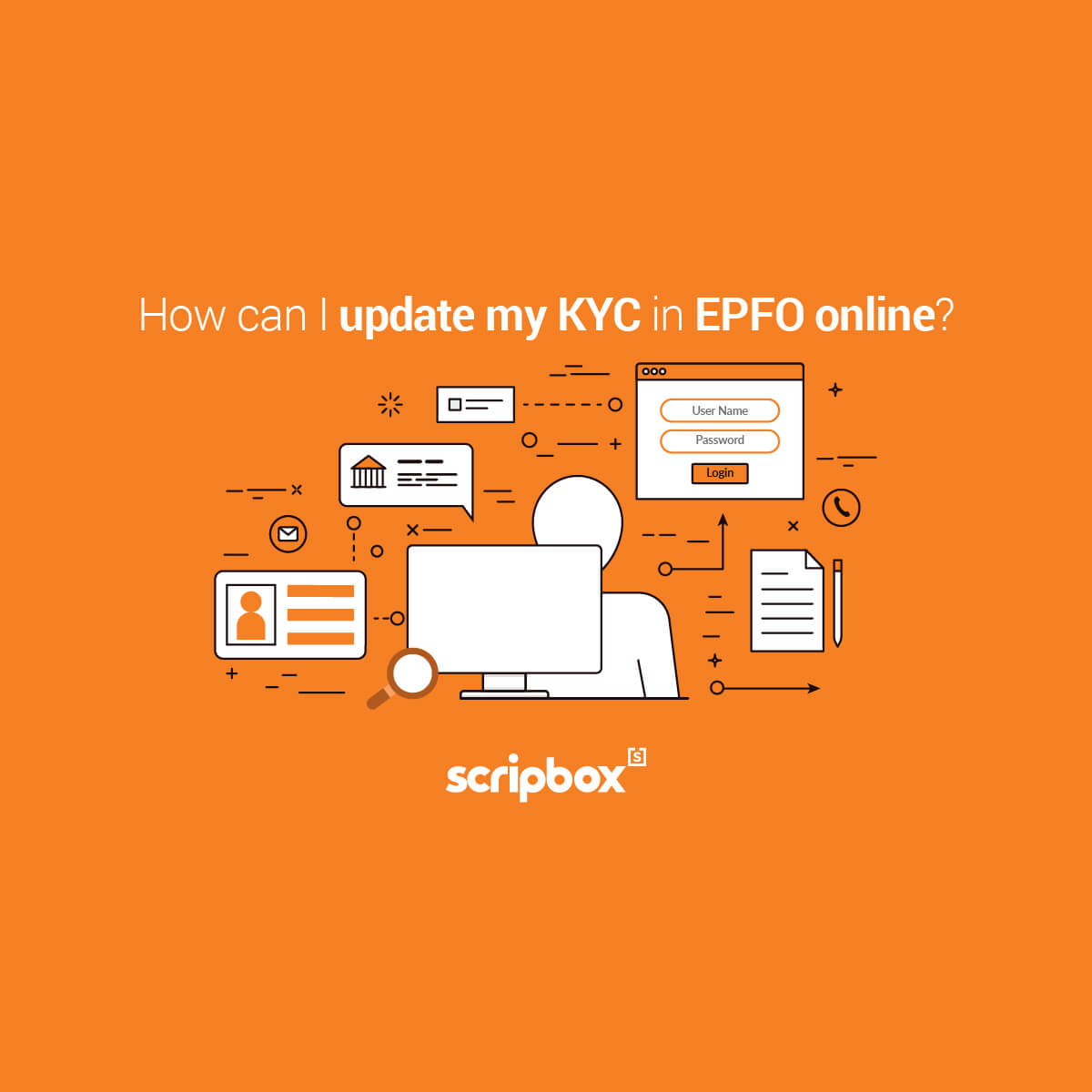The increase in suspicious activities in the financial market has had a negative effect on the financial sector. The increase in financial crime deeply impacts the financial market. Therefore, there was a need to introduce strict procedures to know the customer.
Hence, the Reserve Bank of India made it mandatory for all the financial institutions to verify the details of the customer transacting with them. An individual needs to follow the KYC procedure to complete the verification.
KYC is Know Your Customer. Through this process, the financial institutions verify the identity of the customer. The details like name, current address and other such customers identities are verified at the time of opening an account.
What is KYC?
KYC is the mandatory process of identifying and verifying a client. The verification is done at the time of opening of an account and periodically over time. The Reserve Bank of India introduced KYC regulations in 2002.
KYC is an antimoney laundering process. This helps in curbing the suspicious activities and illegal practices in the financial market. Through this process, the Government of India runs a customer identification program. This helps in knowing the customer better for future transactions
The main objective of KYC regulations is to restrict money laundering in the financial market. With the increase in suspicious activities and unlawful behaviour, the Reserve Bank of India has made it mandatory for all financial institutions to follow the Know Your Customer procedure while opening an account.
KYC is mandatory even for the existing customers. The financial institutions also have to periodically update the KYC or Know Your Customer records. This further helps in preventing frauds in customer accounts.
Why do you need to complete your KYC?
With growing fraudulence in the financial market, it has become very necessary to know the customer you are doing business with. Hence, KYC policies were launched. The RBI has made KYC regulations mandatory to curb any illegalities prevalent in the financial market.
It is very important to complete your KYC. This helps in preventing any potential fraud. KYC regulations further help in safeguarding online business and companies around the globe.
Why is KYC so important?
It helps in knowing the customers better and ensures that they are not doing business with scammers. Thus, the Know Your Customer regulations help in making sure that the customers are genuinely who they claim to be. Any financial institution may refuse to open an account or put the same on halt if the customers fail to meet the minimum KYC requirement.
How to Check your KYC Status?
Any customer after submitting the KYC form along with the officially valid documents can check their status. The Verification once complete, customer can check his registered KYC number through any financial services institute. Following these few simple steps :
- Firstly, visit the CDSL (http://www.cdslindia.com/)
- Secondly. The customer has to enter his PAN number.
- Thirdly, after the KYC is verified then the updated status is displayed on the screen as ‘MF-Verified by CVLMF’. This means the verification status has been updated.
- If in case it has not been verified then the ‘Pending’ status will be shown on the screen.
- There s also an option on taking a print of the page.
What are the Documents Required to Complete KYC?
KYC is not a lengthy process. All you need to do is submit the form with the relevant documents required duly filled and attested. The identities and addresses should be considered while doing KYC of a customer. The documents should be in compliance with the officially valid documents (OVD).
The following list of documents required for registration:-
- Duly filled form with signatures.
- One proof of identity (self-attested)
For proof of Identity, any of the following valid document can be submitted. These documents are the officially valid documents :
- Aadhaar card / Passport / Voter ID Card / Driving Licence
- Pan card with photograph
- Identity Card or any document with the applicant’s photo on it. This Identity Card can be issued by either the Central / State Government or its Departments, Statutory / Regulatory Authorities.
- Identity Cards issued by the Public Sector undertakings, Scheduled Commercial banks, or Public Financial Institutions.
- Identity Cards issued by the College affiliated to Universities, Professional Bodies such as ICAI, ICWAI, ICSI, Bar Council etc. Credit Cards / Debit Cards issued by the select Banks.
- Current Address proof (self-attested)
The following is the list of the valid documents for proof of address :
- Passport / Voters Identity Card / Ration Card / Registered Lease or Sale Agreement of Residence / Driving Licence / Flat Maintenance bill / Insurance Copy
- Utility Bills like Telephone Bill, Electricity Bill or Gas Bill. Please note that the same should not be more than 3 months old.
- Bank Account statement/passbook. Not more than 3 months old.
- Self Declaration copy by the High Court and Supreme Court Judges, giving the new address with pin code.
- Proof of Address issued by any of the following Bank:-Managers of Scheduled Commercial Banks / Scheduled Co-operative Bank / Multinational Foreign Bank / Gazetted Officer / Notary Public / Elected Representative to the Legislative Assembly / Parliament / Documents issued by any Government or Statutory Authority
- Identity card / document with current address issued by any of the following:- Central / State Government and its Departments, Statutory / Regulatory Authorities. Public Sector Undertakings, Scheduled Commercial Banks, Public Financial Institutions, Colleges affiliated to Universities and Professional Bodies such as ICAI, ICWAI, ICSI, Bar Council etc., t their Members
- For FII / Sub Account, Power of Attorney given by the FII / Sub Account to the Custodians
- The Current address proof in the name of the spouse.
- One photograph
What are the Types of KYC (Know Your Customer)?
The Reserve Bank of India made the Know Your Customer process mandatory. This came into force in 2004. As per the KYC regulations, every customer has to undergo the process while opening an account with the financial institution.
There are mainly two types:
- Aadhaar-based KYC
Aadhaar-Based KYC can be completed using his/her Aadhar Card details. However, this process puts a limit on the investment made by a customer every year. An investor can invest only up to Rs. 50,000 every year per fund.
- In-Person Verification
In-Person KYC verification is needed when the customer desires to invest more in a specific fund every year. Here the customer has to visit a fund house or a KYC Kiosk. In-Person verification using the Aadhar Card biometrics can also be done by calling the KRA (KYC Registration Agency) executive at home or office as may be convenient.
In addition, some fund houses also allow customers to get their In-Person verification done through a video call. Here the customer has to display his original proof of identity and address with pin code.
Needless to mention that once the In-Person Verification is complete, the customer can invest more than Rs. 50,000 every financial year.
Ways to Complete KYC?
KYC is an easy and hassle-free process. All you need to do is fill the form and submit the same with officially valid documents. You can either choose Aadhaar-based Verification or In-Person verification depending on the amount you choose to invest every year.
There are three different ways by which you can complete it. They are:-
1. Online: You can also complete the process online. All you need to do is follow a few simple steps. Online KYC is one of the easiest ways to register.
2. Offline: The offline KYC process takes about 5 -7 days to complete. You can also complete Offline KYC by visiting the KRA (KYC Registration Office).
3. Aadhaar-based Biometric Authentication: KYC done through Aadhaar-based biometric authentication allows a customer to invest more than Rs.50,000 every financial year. In Aadhaar-based Biometric Authentication, there is no maximum limit of investment.
Steps to complete KYC online?
The online process of KYC is quite a simple and hassle-free process. There are two ways to complete it online- Aadhaar OTP and Aadhaar-based Biometric KYC. Aadhaar OTP is an easy process. Online registration is less time-consuming. A customer can complete the registration within minutes.
In Addhaar- Based Biometric the customer has to apply for KYC online. An executive from KRA later visits the customer’s home/office for biometric verification.
For Online KYC registration, follow the steps mentioned below :
Step 1: First visit the website of any KRA or Fund House. Some of the Registration Agencies are – NDML, CAMS, Karvy and NSE
Step 2: Secondly you have to enter the details mentioned in your Aadhaar card.
Step 3: Third, a verification code will be sent to your Aadhaar card registered number. Enter the OTP to verify.
Step 4: Now submit the application.
Step 5: UIDAI then verifies the identity. Once verified, the KRA approves the KYC.
Step 6: To check your status you can visit the KRA portal. You can check the status by using your PAN number.
Steps to complete KYC offline?
Offline KYC registration takes about 7 days. It is approved by KRA. Doing KYC offline is an easy process. You have to visit the KRA office to complete your verification.
For doing KYC online one has to follow the steps mentioned below:
Step 1: You have to download the KYC form online from any KRA website. Now fill the complete form.
Step 2: You have to mention your Aadhaar Card or PAN Card details.
Step 3: Visit your nearest KRA Office and submit the application form with officially valid documents like identity and proof of address. The KRA can ask for any other valid document as may be necessary.
Step 4: In certain case customers are also asked to submit their biometrics .
Step 5: After submitting the form, the KRA issues an application number. You can check your status using this number.
How to Complete KYC through Aadhaar-based Biometric?
KYC once done online allows a customer to invest Rs. 50,000 per annum every year in one fund. However, KYC, done via Aadhaar-based Biometric lifts this cap of investment and the customer can invest more than Rs.50,000 p.a. In KYC done through Aadhhaar-based Biometric, there is no maximum limit of investment.
The following are the steps for KYC compliance through Aadhaar-based Biometric :
Step 1: You have to visit the nearest KRA office or fund house.
Step 2: Do the online registration for KYC. (for online registration follow the above-mentioned steps) Request for your online biometrics authentication at the time of registering.
Step 3: Post online registration is complete an executive from Fund House office will visit the home/office of the customer. Show the original documents to the executive. You will also have to provide the biometrics.
Step 4: After authentication is complete, the application have to be submitted. The KYC process is complete.
What are the 3 components of KYC?
KYC refers to the steps followed by the financial institutions to identify and verify a customer. For an effective KYC compliance program, the below-mentioned elements are required ;
- Customer identification procedure (customer due diligence information)
- Customers acceptance policy
- Monitoring the transactions
What is KYC in banking?
KYC means Know Your Customer or Know Your Client. It is a mandatory process followed by the banks to identify and verify their customers. This is done at the time of opening of an account and periodically over time.
Hence, all banks follow this KYC process in order to make sure that their clients are genuinely who they claim to be.
Any bank may refuse to open an account of a customer or put on halt the same in case the client fails to meet the minimum KYC requirement.
How is In-Person Verification (IPV) Different from e-KYC?
e-KYC or electronic Know Your Customer is a process by which your identity is established electronically. Currently, Aadhar is permitted as a mechanism by which this can be done for mutual funds. Only SEBI-regulated KYC registration agencies (KRAs) such as CAMS, CVL and NDML are allowed to do e-KYC. These KYC registration agencies may have their own apps to do either an OTP-based or biometric-based verification. However, there is a Rs. 50,000 per mutual fund per financial year limit for OTP-based verification. Given that limitation, we at Scripbox have decided to continue with paper-based KYC process along with a video IPV for now, until such time we can make the entire process electronic for you.
An investor can invest a maximum amount of 50K “Per Fund House”, “Per Financial Year” if his KYC status is either E- Aadhaar KYC & E-KYC.
Example:
- At the fund house level: An investor can invest Rs. 50,000 in total with SBI fund house. If the investor wishes to invest in ‘SBI Blue Chip Fund (Growth)’ & ‘SBI Ultra Short Term Debt Fund (Growth)’ he/she can invest Rs. 50,000 only & not Rs. 50,000 each.
Frequently Asked Questions
Yes. The Reserve Bank of India has made it mandatory for all financial institutions to follow the KYC procedure while opening an account.
For any non-financial transaction, one does not need the PAN card as KYC document. However, for all financial transactions, a PAN Card is necessary.
In-Person Verification (IPV) is a regulatory requirement that needs to be completed in order to get your KYC registered.
Scripbox uses your video recording (face the camera for 5 seconds) as a way to do IPV.
While you are completing the registration process, the system will ask you to upload this video. In case you choose to skip this step, you will receive a separate email with the link to do your IPV.
In-Person Verification (IPV) is a regulatory requirement that needs to be completed in order to get your KYC registered. It is absolutely required for NRIs, PIOs and Mariners, irrespective of where they are located.
Scripbox uses your video recording (face the camera for 5 seconds) as a way to do IPV.
While you are completing the registration process, the system will ask you to upload this video. In case you choose to skip this step, you will receive a separate email with the link to do your IPV.
Related Articles
- What is KYC?
- Why do you need to complete your KYC?
- How to Check your KYC Status?
- What are the Documents Required to Complete KYC?
- What are the Types of KYC (Know Your Customer)?
- Ways to Complete KYC?
- Steps to complete KYC online?
- Steps to complete KYC offline?
- How to Complete KYC through Aadhaar-based Biometric?
- What are the 3 components of KYC?
- What is KYC in banking?
- How is In-Person Verification (IPV) Different from e-KYC?
- Frequently Asked Questions























Show comments